ARTICLE AD BOX

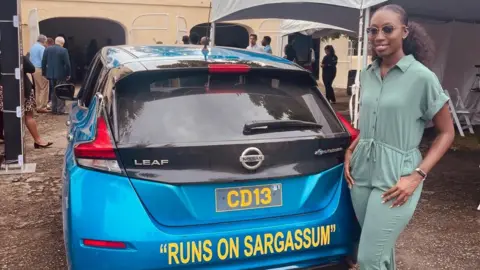 BBC
BBC
Biologist Shanika Spencer was delighted when a test using sargassum to fuel a car was successful
When large swathes of invasive seaweed started washing up on Caribbean beaches in 2011, local residents were perplexed.
Soon, mounds of unsightly sargassum – carried by currents from the Sargasso Sea and linked to climate change – were carpeting the region’s prized coastlines, repelling holidaymakers with the pungent stench emitted as it rots.
Precisely how to tackle it was a dilemma of unprecedented proportions for the tiny tourism-reliant islands with limited resources.
In 2018, Barbados’ Prime Minister Mia Mottley declared sargassum a national emergency.
Now, a pioneering group of Caribbean scientists and environmentalists hope to turn the tide on the problem by transforming the troublesome algae into a lucrative biofuel.

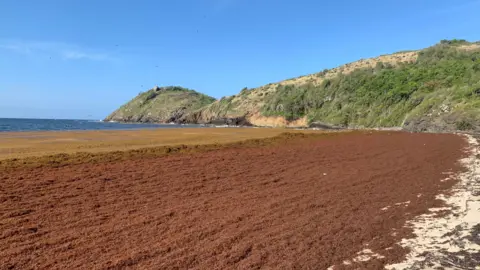 Rufus Gobat
Rufus Gobat
Sargassum has covered some of the most beautiful beaches in the Caribbean, such as this on in Antigua
They recently launched the world’s first vehicle powered by bio-compressed natural gas. The innovative fuel source created at the University of the West Indies (UWI) in Barbados also uses wastewater from local rum distilleries, and dung from the island’s indigenous blackbelly sheep which provides the vital anaerobic bacteria.
The team says any car can be converted to run on the gas via a simple and affordable four-hour installation process, using an easily available kit, at a total cost of around $2,500 (£1,940).
Researchers had initially looked into using sugarcane to reduce reliance on costly, imported fossil fuels and help steer the Caribbean towards its ultimate target of zero emissions.
However, despite Barbados being one of few islands still producing sugarcane, the quantity was deemed insufficient for the team’s ambitious goals, explains the project’s founder Dr Legena Henry.

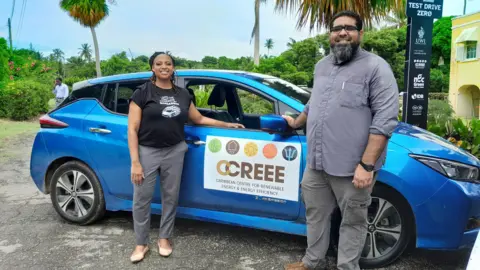
Dr Legena Henry says there is no shortage of sargassum to power cars
Sargassum on the other hand, she grimaces, is something “we will never run out of”.
“Tourism has suffered a lot from the seaweed; hotels have been spending millions on tackling it. It’s caused a crisis,” Dr Henry, a renewable energy expert and UWI lecturer, continues.
The idea that it could have a valuable purpose was suggested by one of her students, Brittney McKenzie, who had observed the volume of trucks being deployed to transport sargassum from Barbados’ beaches.
“We’d just spent three weeks researching sugarcane. But I looked at Brittney’s face and she was so excited, I couldn’t break her heart,” Dr Henry recalls.
“We already had rum distillery waste water so we decided to put that with sargassum and see what happened.”
Brittney was tasked with collecting seaweed from beaches and setting up small scale bioreactors to conduct preliminary research.
“Within just two weeks we got pretty good results,” Brittney tells the BBC. “It was turning into something even bigger than we initially thought.”
The team filed a patent on their formula and, in 2019, presented their project to potential investors during a side meeting at the UN General Assembly in New York.
Upon touchdown back in Barbados, Dr Henry’s phone was “buzzing” with messages of congratulation – including one from US non-profit Blue Chip Foundation offering $100,000 to get the work off the ground.
Biologist Shamika Spencer was hired to experiment with differing amounts of sargassum and waste water to figure out which combination produced the most biogas.

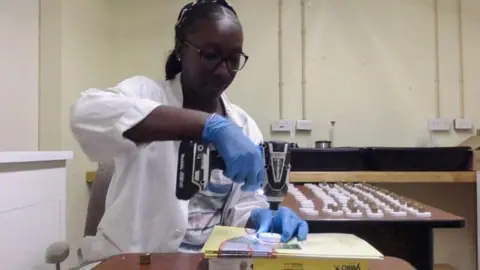
Shamika Spencer experimented with different ratios of seaweed and waste water
She says she leapt at the chance to take part.
“Sargassum has been plaguing the region for several years,” Ms Spencer, who is from Antigua and Barbuda, explains. “I had always wondered about this new seaweed ruining the beaches in Antigua, and when I came to Barbados to study I noticed it here too.”
The algae do not just threaten tourism. They also pose a threat to human health through the hydrogen sulphide they release as they decomposes, along with native wildlife like critically endangered sea turtle hatchlings which get trapped in thick mats of beached seaweed.
Water pollution and warming seas are credited with the upsurge in sargassum, another cataclysmic result of climate change that the Caribbean has done little to contribute to but often bears the brunt of.
Calls for eco reparations from leaders including Barbados' leader Mia Mottley and Antigua’s Prime Minister Gaston Browne have been clamorous in recent years as the region battles ever-rising sea levels and worsening storms.
While waiting for those to bear fruit, this project represents one example of the Caribbean taking its environmental future into its own hands.
“I realised it was important that after removing the sargassum from beaches, it doesn’t just go to landfills,” Ms Spencer continues.
“By repurposing it in vehicles you protect tourism and prevent people from inhaling it. When we scale up to fuel more vehicles it will require a very large volume.”
Watching the successful test drive of a biogas-charged Nissan Leaf – supplied by the Caribbean Centre for Renewable Energy and Energy Efficiency – was utterly exhilarating, smiles Dr Henry.
The MIT-educated mechanical engineer knew she was risking her reputation should the venture fail.
“We didn’t sleep the night before the test drive event,” she admits. “I was putting my whole life’s work on the line.”
Dr Henry and her husband, career data scientist Nigel Henry, created deep tech firm Rum and Sargassum Inc and are on a mission to change the face of energy production in the Caribbean.
Both are originally from leading oil producer Trinidad, studied in the US and were determined to bring their skills back home.
“My goal is to help build up this region,” Dr Henry says. “We are now setting up a four-car pilot to demonstrate real life working prototypes to convince funders that this is workable and scalable.”
She estimates it will cost around $2m to display initial commercial activity and $7.5m to reach the point where the company is able to sell gas to 300 taxis in Barbados.
Potential funders include the US Agency for Internationals Development, the European Union and international development banks through debt financing.
The team plans to expand its work by setting up a biogas station to replace its small existing facility.
UWI hopes to introduce other sargassum-based innovations too, such as pest control products.
Ms Spencer says it’s been "heart-warming” to witness the results of the team’s research.
“Just seeing the actual potential is motivating me to keep working,” she adds.

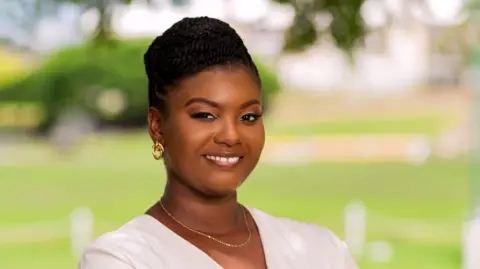 Tremaine Yearwood
Tremaine Yearwood
Brittney McKenzie says seeing her idea put into practice was "mind-blowing"
As for Brittney, five years after her eureka moment, she says she’s still “pinching” herself.
“To see the car in action was mind-blowing,” she grins. “I would encourage all young scientists to press ahead with their ideas. You never know when you might make the next big discovery.”
“It’s taken years of work, plenty of grit and pushing against walls to reach this point,” Dr Henry concurs. “It’s an example of UWI innovation and is exportable to the wider world, because it’s not just the Caribbean that’s affected; sargassum also impacts parts of West Africa, South America and Florida.
“These small islands have created technology that can benefit the rest of the world; this is a big win for the Caribbean.”

 1 month ago
10
1 month ago
10

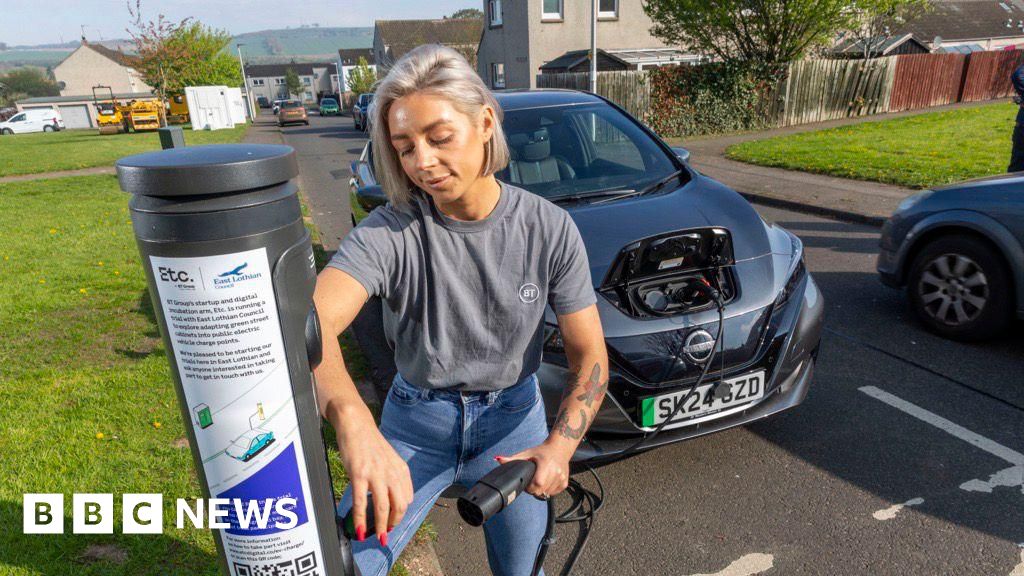






 English (US) ·
English (US) ·